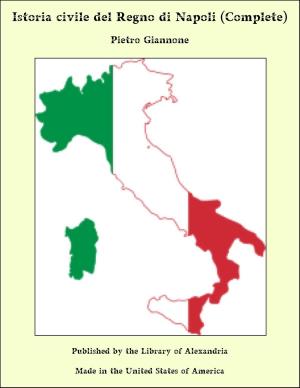Bible Animals; Being a Description of Every Living Creature Mentioned in the Scripture from the Ape to the Coral
Nonfiction, Religion & Spirituality, New Age, History, Fiction & Literature| Author: | John George Wood | ISBN: | 9781465582164 |
| Publisher: | Library of Alexandria | Publication: | March 8, 2015 |
| Imprint: | Language: | English |
| Author: | John George Wood |
| ISBN: | 9781465582164 |
| Publisher: | Library of Alexandria |
| Publication: | March 8, 2015 |
| Imprint: | |
| Language: | English |
Owing to the conditions of time, language, country, and race under which the various books of the Holy Scriptures were written, it is impossible that they should be rightly understood at the present day, and in this land, without the aid of many departments of knowledge. Contemporary history, philology, geography, and ethnology must all be pressed into the service of the true Biblical scholar; and there is yet another science which is to the full as important as either of the others. This is Natural History, in its widest sense. The Oriental character of the Scriptural books causes them to abound with metaphors and symbols, taken from the common life of the time. They embrace the barren precipitous rocks alternating with the green and fertile valleys, the trees, flowers, and herbage, the creeping things of the earth, the fishes of the sea, the birds of the air, and the beasts which abode with man or dwelt in the deserts and forests. Unless, therefore, we understand these writings as those understood them for whom they were written, it is evident that we shall misinterpret instead of rightly comprehending them. Even with secular books of equally ancient date, the right understanding of them would be important, but in the case of the Holy Scriptures it is more than important, and becomes a duty. The field which is laid open to us is so large that only one department of Natural History, namely Zoology, can be treated in this work, although it is illustrated by many references to other branches of Natural History, to the physical geography of Palestine, Egypt, and Syria, the race-character of the inhabitants, and historical parallels. The importance of Zoology in elucidating the Scriptures cannot be overrated, and without its aid we shall not only miss the point of innumerable passages of the Old and New Testament, but the words of our Lord Himself will either be totally misinterpreted, or at least lose the greater part of their significance.
Owing to the conditions of time, language, country, and race under which the various books of the Holy Scriptures were written, it is impossible that they should be rightly understood at the present day, and in this land, without the aid of many departments of knowledge. Contemporary history, philology, geography, and ethnology must all be pressed into the service of the true Biblical scholar; and there is yet another science which is to the full as important as either of the others. This is Natural History, in its widest sense. The Oriental character of the Scriptural books causes them to abound with metaphors and symbols, taken from the common life of the time. They embrace the barren precipitous rocks alternating with the green and fertile valleys, the trees, flowers, and herbage, the creeping things of the earth, the fishes of the sea, the birds of the air, and the beasts which abode with man or dwelt in the deserts and forests. Unless, therefore, we understand these writings as those understood them for whom they were written, it is evident that we shall misinterpret instead of rightly comprehending them. Even with secular books of equally ancient date, the right understanding of them would be important, but in the case of the Holy Scriptures it is more than important, and becomes a duty. The field which is laid open to us is so large that only one department of Natural History, namely Zoology, can be treated in this work, although it is illustrated by many references to other branches of Natural History, to the physical geography of Palestine, Egypt, and Syria, the race-character of the inhabitants, and historical parallels. The importance of Zoology in elucidating the Scriptures cannot be overrated, and without its aid we shall not only miss the point of innumerable passages of the Old and New Testament, but the words of our Lord Himself will either be totally misinterpreted, or at least lose the greater part of their significance.















